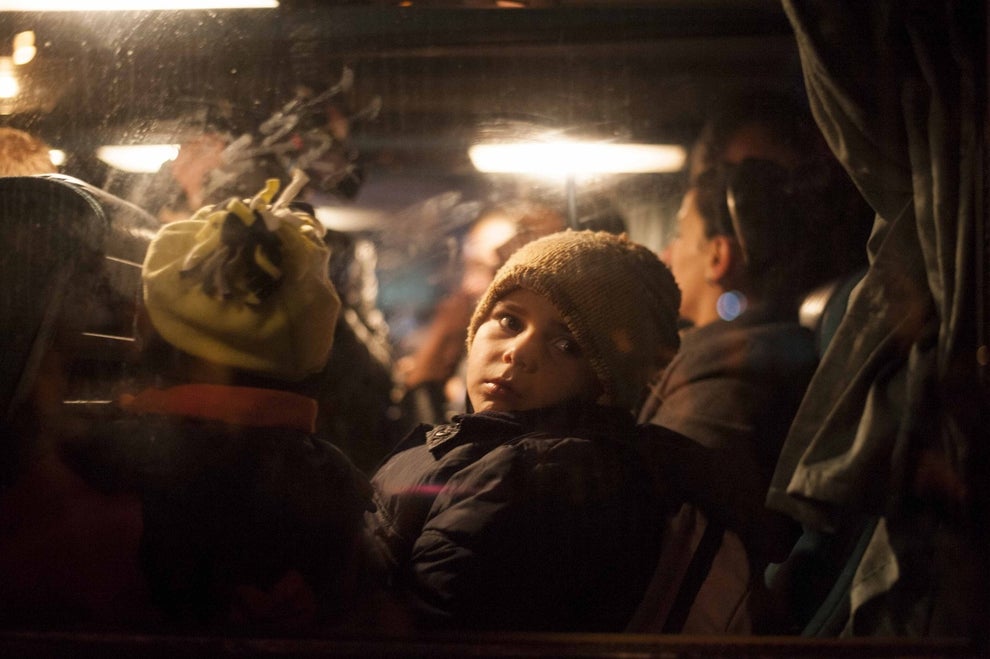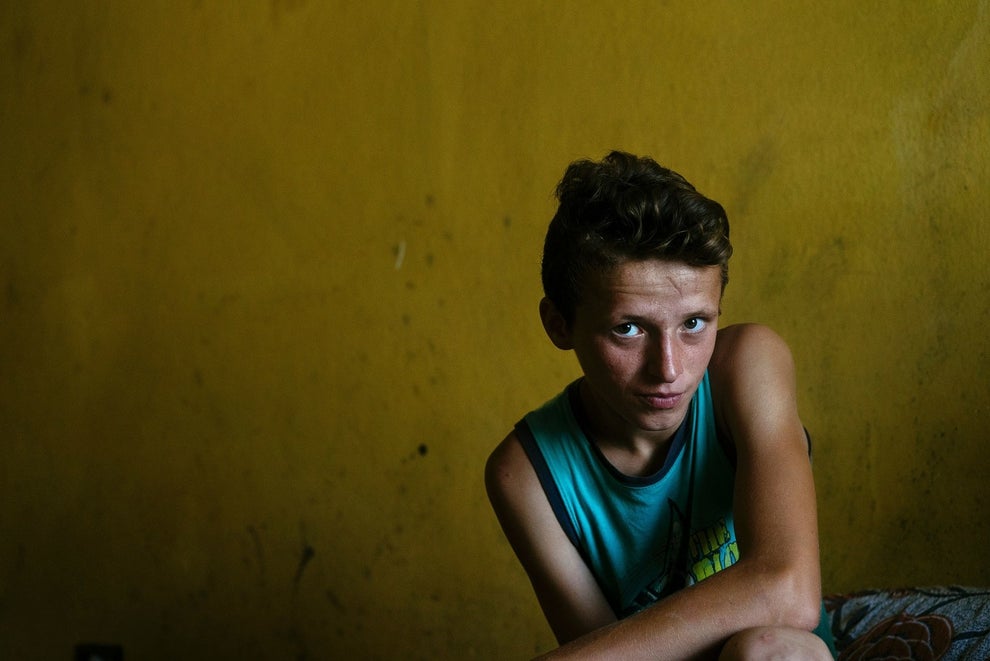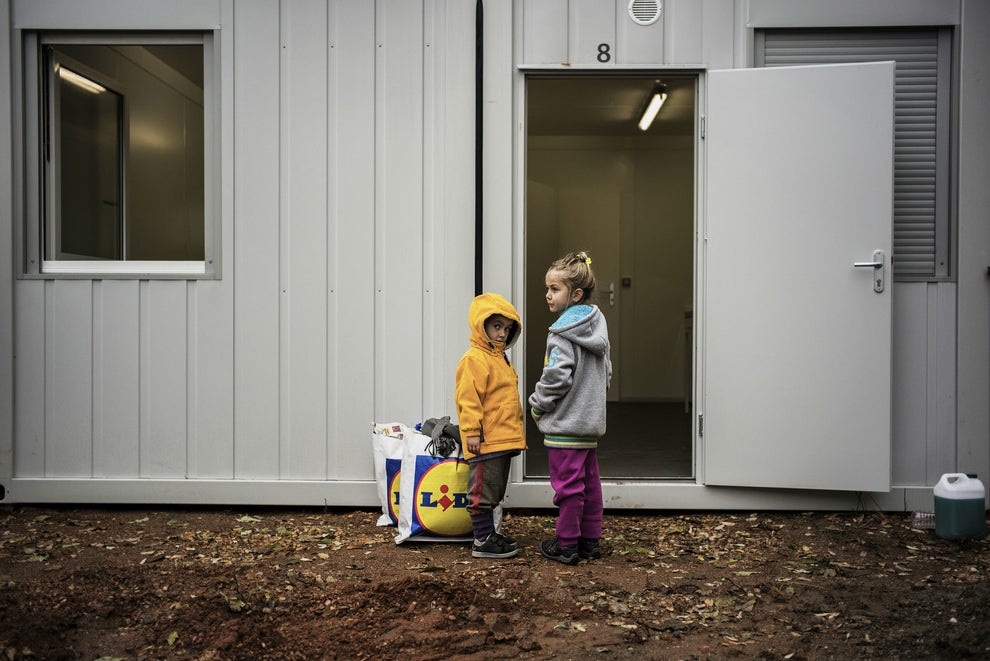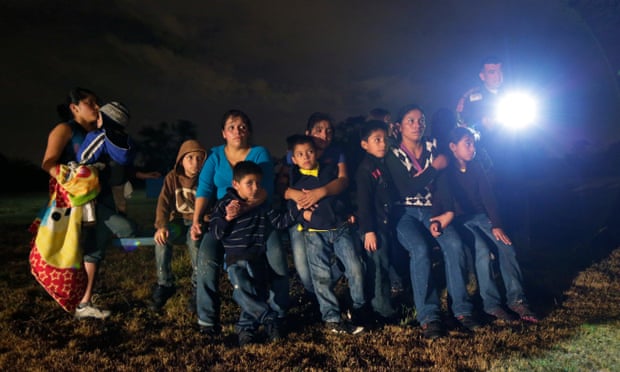Public opinion remains deeply divided over whether the U.S. government has a moral obligation to offer asylum to Central Americans children escaping political persecution or violence in their home countries. According to a survey published last month by theAssociated Press, 53 percent of the U.S. public think their country has no obligation to take in the latest wave of “tired and huddled masses” fleeing troubles in their home countries.
We talked to 11 scholars and activists who think the United States, a self-professed nation of immigrants, does have a moral obligation to provide asylum to Central American minors, many of whom — experts argue — are fleeing violence that resulted from U.S. foreign policy.
Fusion presents the untold history behind the unaccompanied minors, a collection of 60-second videos.
ROBERT REICH
Former Labor Secretary
“We are directly responsible for what’s going on”
Protesters at anti-immigration demonstrations around the country insist they’re not racist and that they just want the unaccompanied minors to enter to the U.S. legally. But most kids don’t qualify to apply for visas under any existing U.S. immigration category says Bill Ong Hing, who teaches immigration law at the University of San Francisco.
Hing says he’s concerned about legislation that would allow an expedited deportation of unaccompanied children without a proper immigration hearing. Nearly 50 percent of children with legal representation are granted legal status in the United States, as opposed to one out of 10 without a lawyer, according to the Transnational Records Access Clearinghouse at Syracuse University.
ALEX SANCHEZ
Former gang member and co-founder of Homies Unidos
“Gangs are not the only reason why children are fleeing”
A common narrative among many of the children fleeing the northern triangle of Central America involves gangs terrorizing people through extortion, forced recruitment and drug-turf wars. Absent from the conversation is analysis on how and why those gangs flourished in Central America in the first place, and the economic conditions that allowed them to thrive. “When I hear people blaming gangs for the reason why kids are fleeing Central America they miss the real reason why these children are leaving,” explains Alex Sanchez, a former Salvadoran gang member and a founding member of the Los Angeles-based gang-prevention group Homies Unidos.
“These countries have economic issues, poverty, corruption and El Salvador even has an ex-president that’s on the run right now,” Sanchez said, referring to former Salvadoran President Francisco Flores, who iswanted on embezzlement and corruption charges for allegedly embezzling $5.3 million while he was president and mismanaging $10 million that was donated by Taiwan’s government during his presidency.
“All of this is a result of a corrupt society and the children are the victims in this tragedy,” Sanchez said.
POLICARPO CHAJ
Executive director of the indigenous community group Maya Vision
“Maya children face three additional language barriers”
A sizable contingent of indigenous Maya children are among the tens of thousands of Guatemalan minors fleeing to the United States. Once they arrive, they face additional barriers because many Maya speak little or no Spanish.
Policarpo Chaj was born in the central highlands of Guatemala and today serves as the executive director of Maya Vision, an indigenous community group in Los Angeles. His organization helps federal agencies in the U.S. with translation services for some of the 22 Maya languages spoken in Guatemala. Chaj says in his decade working as a translator for the Immigration and Customs Enforcement (ICE) he’s never seen so many young Mayas fleeing to the United States.
Multiple requests to ICE for more details and data on the number of Maya children detained here went unanswered.
K’iche’, a Maya language spoken by the K’iche’ people in Guatemala, became the 25th most used language in immigration courts last year.
MARQUEECE HARRIS-DAWSON
President, Community Coalition
“It feels like the country hasn’t moved since the early 1940s and 50s”
Marqueece Harris-Dawson leads a community organization in South Los Angeles. He says the recent protesters in Murrieta, Californiaagainst the arrival of unaccompanied children in the region reminded him “of another piece of my history as an African American.”
DANA FRANK
Honduras History Professor, University of California, Santa Cruz
“What’s missing [from the conversation] is the responsibility of the really dangerous Honduran government”
Most of the unaccompanied children arriving in the United States are coming from Honduras, which has the dubious distinction of being one of the most violent countries in the world.
In Honduras anyone can kill anybody with total impunity, says Dana Frank, a professor of history at the University of California, Santa Cruz.
HECTOR FLORES
Artivist, Las Cafeteras
“In the time of the great divide, my people were left behind”
Héctor Flores is an activist and vocalist in the Los Angeles-based band “Las Cafeteras.” He expressed his thoughts on unaccompanied children coming to the U.S. in a lyrical spoken word piece.
MONICA NOVOA
Communications Strategist, Families for Freedom
“The way that Central Americans are painted in the media is very harmful”
Mónica Novoa’s family left El Salvador when she was just three years old in 1982. Her family was fleeing a military crackdown that targeted teachers and other intellectuals during the civil war.
She remembers the way people fleeing the Salvadoran civil war were portrayed in the media when she was growing up. Novoa, who is currently a communications strategist for Families for Freedom in New York, says the press should consider how children feel when watching news reports covering unaccompanied minors coming to the U.S.
FELIX KURY
Psychotherapist, Clínica Martín-Baró, UCSF/SFSU
“A crime against humanity”
Felix Kury is a psychotherapist who practices at Clínica Martín-Baró in San Francisco. He worries about the psychological effects of sending children back to the environments they fled.
LEISY ABREGO
Sociologist, University of California, Los Angeles
“The Central American Free Trade Agreement has been disastrous for the region”
Leisy J. Abrego is a sociologist working at the University of California, Los Angeles. She’s interviewed more than 100 Central American youths for her book “Sacrificing Families,” which explores the experiences of Salvadoran parents in the United States and their children back home.
Abrego maintains that U.S. foreign policy is to blame for the conditions that Central American kids are facing back home.
“The Central American Free Trade Agreement has been disastrous for the region. Instead of reducing inequality, they’ve exacerbated [it] and made it impossible for people to remain there and actually survive,” Abrego said.
“One of the results of that inequality is that people have to find way to survive,” she added; “and when they don’t find it there they have to leave.”
SARAHI & ANTHONY DORMES
Mother and son who fled Honduras in June, 2014
“They killed one of my neighbors … the killers had confused him for my brother”
Sarahi Dormes fled Honduras with her 7-year-old son last June. She says her brother was killed by gang members two years ago; the rest of her family fled when the gang returned to kill her second brother in retaliation for refusing to join them.
Though her family managed to escape the immediate threat of violence in her home country, her family has been separated in the United States. She says the future is unclear.
We talked to 11 scholars and activists who think the United States, a self-professed nation of immigrants, does have a moral obligation to provide asylum to Central American minors, many of whom — experts argue — are fleeing violence that resulted from U.S. foreign policy.
Fusion presents the untold history behind the unaccompanied minors, a collection of 60-second videos.
ROBERT REICH
Former Labor Secretary
“We are directly responsible for what’s going on”
Illegal narcotics have been smuggled through Central America for decades, but the violence of the drug war has metastasized aggressively throughout the region in recent years. According to the United Nations, the United States and Mexico’s war on the cartels has “pushed the front lines of drug trafficking towards the south” and turned Central American countries such as Guatemala into a “bottleneck” for 90 percent of the cocaine smuggled north.
“You don’t have to be a rocket scientist to understand this stuff; as you push more and more of the violence into Central America … a lot of the kids and the teenagers face this diabolical choice: join the gangs, get killed, or flee. Many of them choose to flee to the United States,” former Labor Secretary Robert Reich told Fusion.
In 2009, only 3,304 “unaccompanied alien children” from El Salvador, Guatemala and Honduras were “encountered” at the U.S. border, according to the U.S. Customs and Border Protection. By June of this year, that number had jumped to 43,933, according to government data. Homeland Security Secretary Jeh Johnson predicts as many as 90,000 unaccompanied minors could be apprehended before the end of fiscal year, on September 30.
Reich says that by pinching the drug cartels out of Mexico and Colombia and into northern Central America, the United States may be implicated in the rise of unaccompanied minors fleeing Guatemala, El Salvador and Honduras.
“Just connect the dots,” Reich said. “We are directly responsible for what’s going on.”
BILL HING
Immigration Law Professor, University of San Francisco
“The vast majority of these children would not qualify to apply [for legal status] under any existing immigration visa category.”
“You don’t have to be a rocket scientist to understand this stuff; as you push more and more of the violence into Central America … a lot of the kids and the teenagers face this diabolical choice: join the gangs, get killed, or flee. Many of them choose to flee to the United States,” former Labor Secretary Robert Reich told Fusion.
In 2009, only 3,304 “unaccompanied alien children” from El Salvador, Guatemala and Honduras were “encountered” at the U.S. border, according to the U.S. Customs and Border Protection. By June of this year, that number had jumped to 43,933, according to government data. Homeland Security Secretary Jeh Johnson predicts as many as 90,000 unaccompanied minors could be apprehended before the end of fiscal year, on September 30.
Reich says that by pinching the drug cartels out of Mexico and Colombia and into northern Central America, the United States may be implicated in the rise of unaccompanied minors fleeing Guatemala, El Salvador and Honduras.
“Just connect the dots,” Reich said. “We are directly responsible for what’s going on.”
BILL HING
Immigration Law Professor, University of San Francisco
“The vast majority of these children would not qualify to apply [for legal status] under any existing immigration visa category.”
Hing says he’s concerned about legislation that would allow an expedited deportation of unaccompanied children without a proper immigration hearing. Nearly 50 percent of children with legal representation are granted legal status in the United States, as opposed to one out of 10 without a lawyer, according to the Transnational Records Access Clearinghouse at Syracuse University.
ALEX SANCHEZ
Former gang member and co-founder of Homies Unidos
“Gangs are not the only reason why children are fleeing”
“These countries have economic issues, poverty, corruption and El Salvador even has an ex-president that’s on the run right now,” Sanchez said, referring to former Salvadoran President Francisco Flores, who iswanted on embezzlement and corruption charges for allegedly embezzling $5.3 million while he was president and mismanaging $10 million that was donated by Taiwan’s government during his presidency.
“All of this is a result of a corrupt society and the children are the victims in this tragedy,” Sanchez said.
POLICARPO CHAJ
Executive director of the indigenous community group Maya Vision
“Maya children face three additional language barriers”
A sizable contingent of indigenous Maya children are among the tens of thousands of Guatemalan minors fleeing to the United States. Once they arrive, they face additional barriers because many Maya speak little or no Spanish.
Policarpo Chaj was born in the central highlands of Guatemala and today serves as the executive director of Maya Vision, an indigenous community group in Los Angeles. His organization helps federal agencies in the U.S. with translation services for some of the 22 Maya languages spoken in Guatemala. Chaj says in his decade working as a translator for the Immigration and Customs Enforcement (ICE) he’s never seen so many young Mayas fleeing to the United States.
Multiple requests to ICE for more details and data on the number of Maya children detained here went unanswered.
K’iche’, a Maya language spoken by the K’iche’ people in Guatemala, became the 25th most used language in immigration courts last year.
MARQUEECE HARRIS-DAWSON
President, Community Coalition
“It feels like the country hasn’t moved since the early 1940s and 50s”
Marqueece Harris-Dawson leads a community organization in South Los Angeles. He says the recent protesters in Murrieta, Californiaagainst the arrival of unaccompanied children in the region reminded him “of another piece of my history as an African American.”
DANA FRANK
Honduras History Professor, University of California, Santa Cruz
“What’s missing [from the conversation] is the responsibility of the really dangerous Honduran government”
In Honduras anyone can kill anybody with total impunity, says Dana Frank, a professor of history at the University of California, Santa Cruz.
HECTOR FLORES
Artivist, Las Cafeteras
“In the time of the great divide, my people were left behind”
Héctor Flores is an activist and vocalist in the Los Angeles-based band “Las Cafeteras.” He expressed his thoughts on unaccompanied children coming to the U.S. in a lyrical spoken word piece.
MONICA NOVOA
Communications Strategist, Families for Freedom
“The way that Central Americans are painted in the media is very harmful”
Mónica Novoa’s family left El Salvador when she was just three years old in 1982. Her family was fleeing a military crackdown that targeted teachers and other intellectuals during the civil war.
She remembers the way people fleeing the Salvadoran civil war were portrayed in the media when she was growing up. Novoa, who is currently a communications strategist for Families for Freedom in New York, says the press should consider how children feel when watching news reports covering unaccompanied minors coming to the U.S.
FELIX KURY
Psychotherapist, Clínica Martín-Baró, UCSF/SFSU
“A crime against humanity”
LEISY ABREGO
Sociologist, University of California, Los Angeles
“The Central American Free Trade Agreement has been disastrous for the region”
Leisy J. Abrego is a sociologist working at the University of California, Los Angeles. She’s interviewed more than 100 Central American youths for her book “Sacrificing Families,” which explores the experiences of Salvadoran parents in the United States and their children back home.
Abrego maintains that U.S. foreign policy is to blame for the conditions that Central American kids are facing back home.
“The Central American Free Trade Agreement has been disastrous for the region. Instead of reducing inequality, they’ve exacerbated [it] and made it impossible for people to remain there and actually survive,” Abrego said.
“One of the results of that inequality is that people have to find way to survive,” she added; “and when they don’t find it there they have to leave.”
SARAHI & ANTHONY DORMES
Mother and son who fled Honduras in June, 2014
“They killed one of my neighbors … the killers had confused him for my brother”
Sarahi Dormes fled Honduras with her 7-year-old son last June. She says her brother was killed by gang members two years ago; the rest of her family fled when the gang returned to kill her second brother in retaliation for refusing to join them.
Though her family managed to escape the immediate threat of violence in her home country, her family has been separated in the United States. She says the future is unclear.
Fonte: Fusion.net
E-BOOK GRATIS
SCARICA GRATUITAMENTE LA GUIDA PRATICA
I Minori Stranieri non Accompagnati
E-BOOK GRATIS
SCARICA GRATUITAMENTE LA GUIDA PRATICA
I Minori Stranieri non Accompagnati
The untold history of unaccompanied minors
Public opinion remains deeply divided over whether the U.S. government has a moral obligation to offer asylum to Central Americans childre...






 Bekim left Albania when he was a teenager. He was forced to flee after local mafia tried to shoot his father, he says. He made the long journey over land to Spain, and it was there Bekim – not his real name – met people-smugglers who wooed him with promises of a new life in the UK. But it would come at a cost.
Bekim left Albania when he was a teenager. He was forced to flee after local mafia tried to shoot his father, he says. He made the long journey over land to Spain, and it was there Bekim – not his real name – met people-smugglers who wooed him with promises of a new life in the UK. But it would come at a cost.



















